Historic Preservation Advisory Board Projects & County History
The Otero County Historic Preservation Advisory Board advises and assists with preservation projects throughout the county. Learn more about a few of the ongoing projects we are working on.
Japanese American History of Otero County, Colorado
Phase II of the Project is Underway!
The Otero County Preservation Board continues its work to document and record the history of all residents of Otero County. The Japanese American community identified Valleyview-Hillcrest Cemetery in Rocky Ford as significant to their history due to the large Japanese American section with graves dating as early as the late nineteenth century. The Cemetery was determined eligible for the National Register of Historic Places under Criterion A at the local level for its association with the ethnic history of Japanese Americans and Hispanics in Otero County and under Criterion C as a rural designed landscape.
The City of Rocky Ford gave permission for the Cemetery to be nominated to the National Register and the County received a History Colorado-State Historical Fund grant to research and prepare the National Register nomination, have the Kanji (Japanese writing) on headstones translated, and develop a series of “Untold Stories” documenting the lives, sacrifices and contributions of individuals buried in the Japanese-American section. We hope this project will lay the groundwork for additional “Untold Stories” of others buried at the Cemetery.
In June 2022 Amy Konishi Dell and the County Preservation Officer gave a presentation on the Japanese American history of Otero County and the second phase of the project at the Rocky Ford Museum. Registrants of the "On the Road" historic preservation event being held by Colorado Preservation Inc., will have an opportunity to visit the cemetery and learn about the project during the tour "Historic Preservation-Off Main Street" which will be offered on August 26th.
Translation of the Kanji (Japanese writing) on the first group of headstones has been completed and additional translations are underway. Project consultants are in the process of drafting the National Register nomination and Untold Stories.
If you have documentation related to the Cemetery or can share histories of someone buried at Valleyview-Hillcrest, please contact the OCHPAB through our county email at ochistoricpreservation@oterogov.org
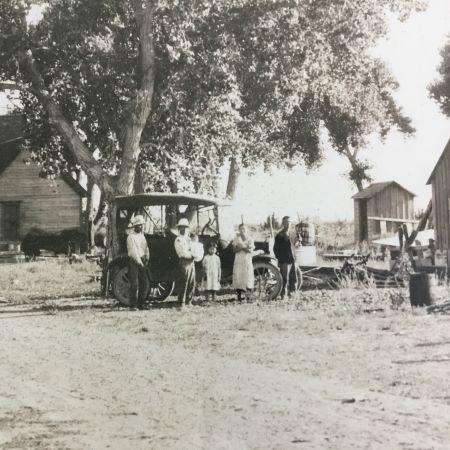
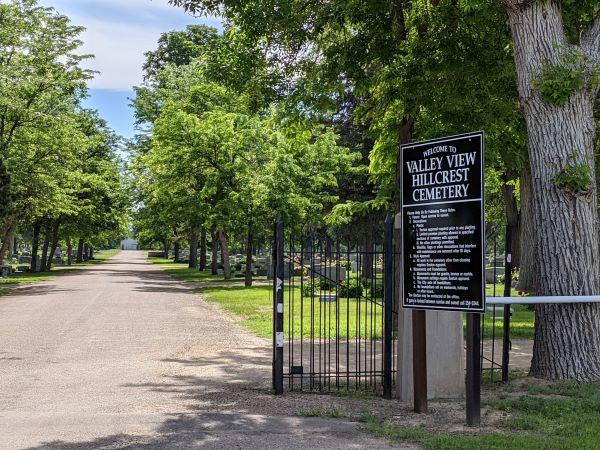
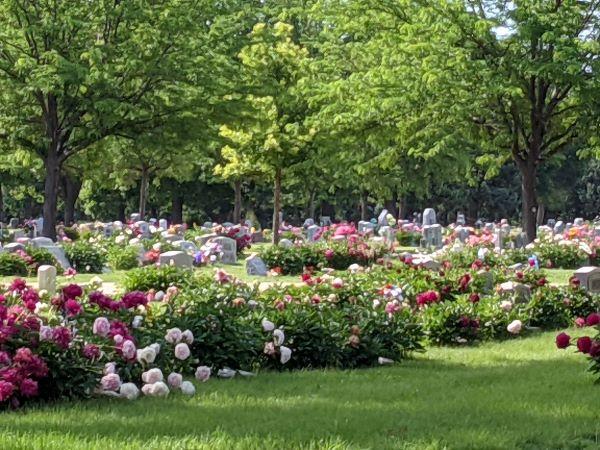
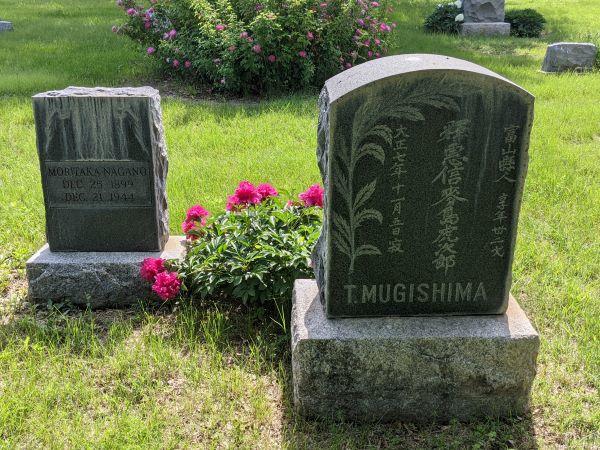
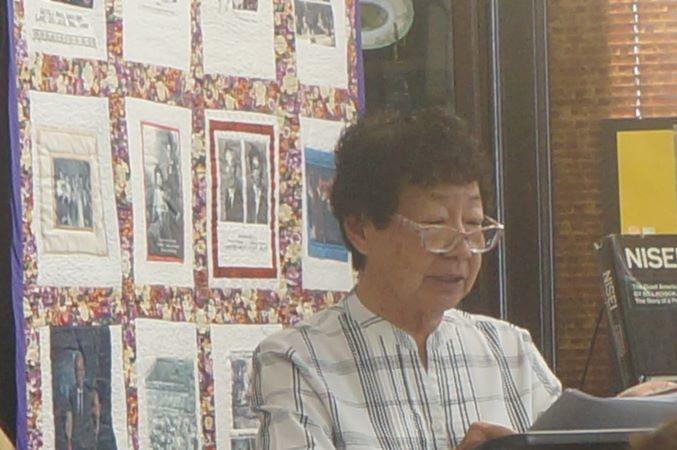
Historic Context
Japanese-Americans in Otero County, Colorado: An Historic Context by: Natasha E Krasnow
With contributions by:
- Michelle Slaughter
- Kathleen Corbett, Ph.D., Corbett AHS, Inc.
- Rebecca Goodwin
April 23, 2019, Revised June 2019
Rehabilitation of the Historic Masonic Lodge Building in La Junta
Phase III completed
The project architects Form+Works have completed the final draft of the construction documents for the rehabilitation of the interior and remaining exterior elements of the historic Euclid Masonic Lodge building. The architects working in conjunction with structural, mechanical and other engineering specialists, developed the CDs with the input of the District Attorney’s office, stakeholders and users of the DA’s office services, and the county commissioners. Otero Partners, Inc., the county commissioners and the DA’s office will use the developed documents and updated cost estimates to plan for future phases of the rehabilitation. This work was funded in part by History Colorado-State Historical Fund.
Phase II: Rehabilitation of the original 3rd and 4th floor windows – Completed May 2024!
Otero Partners, Inc. received a History Colorado-State Historical Fund grant to rehabilitate the original 3rd and 4th-floor windows. Funds from the historic preservation tax credit from the roof project were used to meet the cash match requirement for the grant. The grant kick-off meeting was held in August 2023. Working with the project architects Form+Works Design Group and project manager Jane Daniels, a request for qualified bids was released. Heritage Windows Restoration, LLC (a historic preservation contractor specializing in historic windows and doors) was selected for the project. The pre-construction meeting was held on November 28, 2023, and Heritage mobilized to begin work in early December 2023.
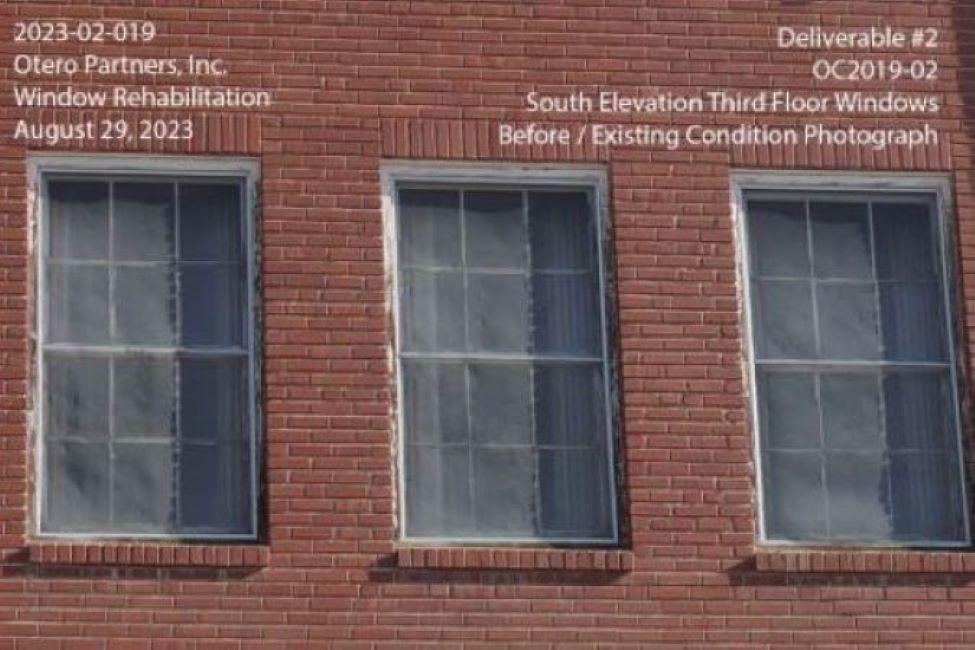
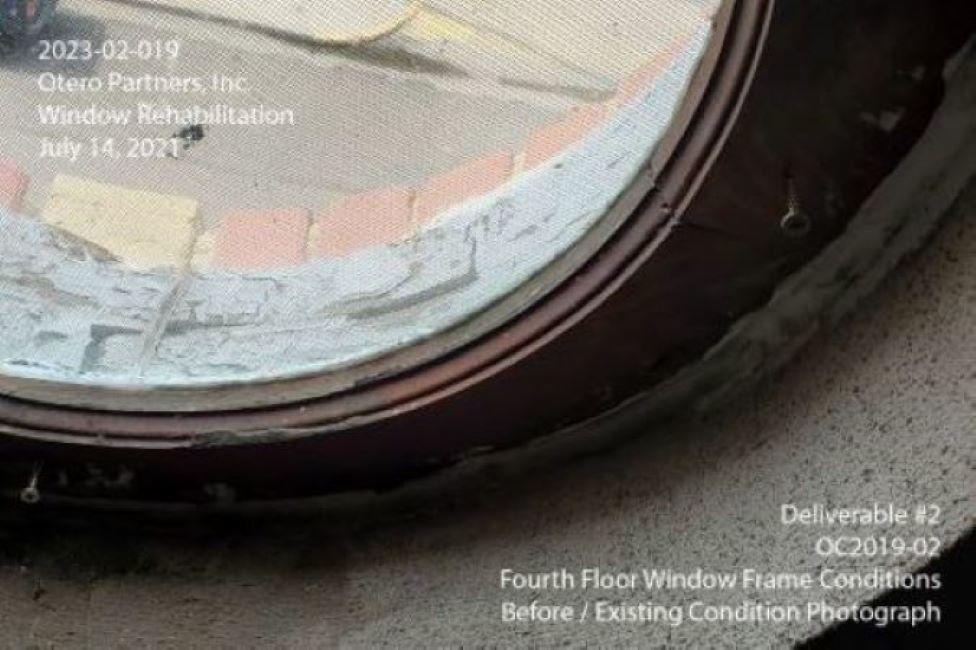

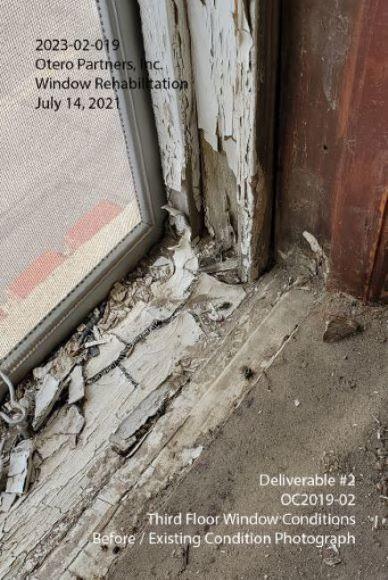
Rehabilitation Underway
Using a lift, Heritage Window Restoration removed the windows and then transported them to their workshop in Commerce City where work began to rehabilitate the historic windows. Temporary window enclosures were installed on the 3rd and 4th floors.
The wood windows were disassembled. Lead testing was conducted, with none detected. Each layer of paint was analyzed and documented using the Munsell paint system. Using this system a modern paint was selected that matches the original color. Stain for the interior of the windows was analyzed and a stain selected that closely matches the interior stained woodwork of the building.
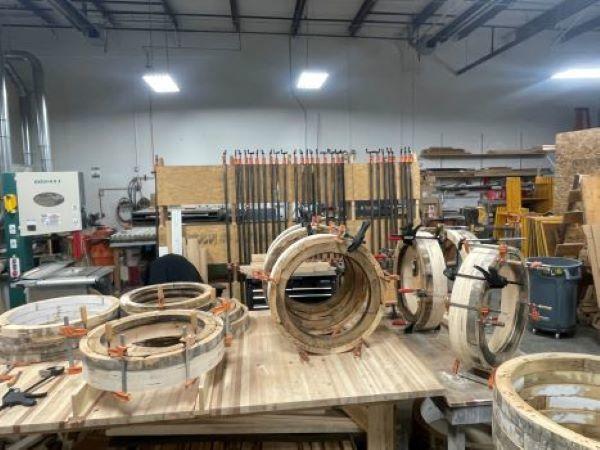
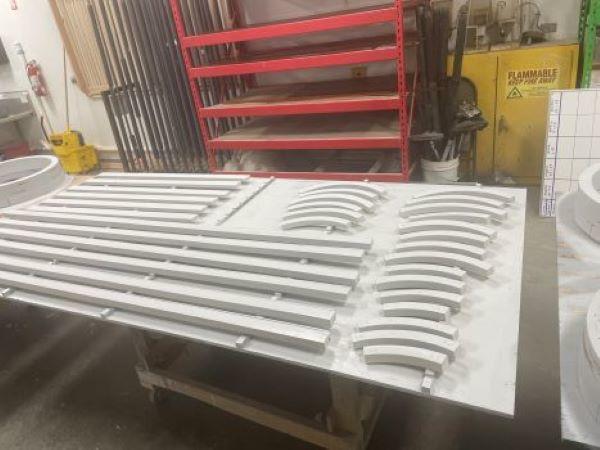
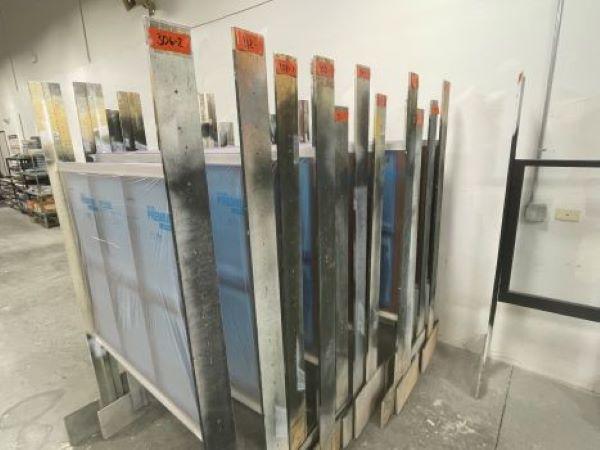
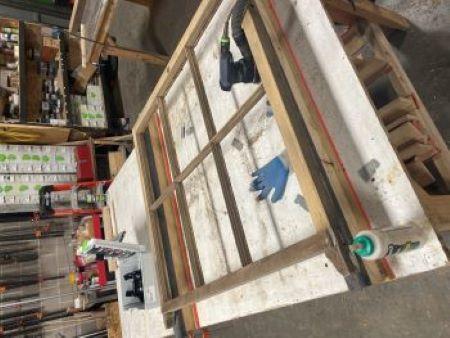
Reinstallation of Windows and Completion of Project
Reinstallation of the restored windows began in April 2024. Hardware was installed on the sashes of the 4th-floor ocular windows to allow the removal of the sashes for maintenance. Weights and ropes for the double-hung 3rd-floor windows were examined and repaired as needed. At the project completion, Heritage Window Restoration provided OPI with a product summary sheet and the tool necessary to remove ocular windows for maintenance.
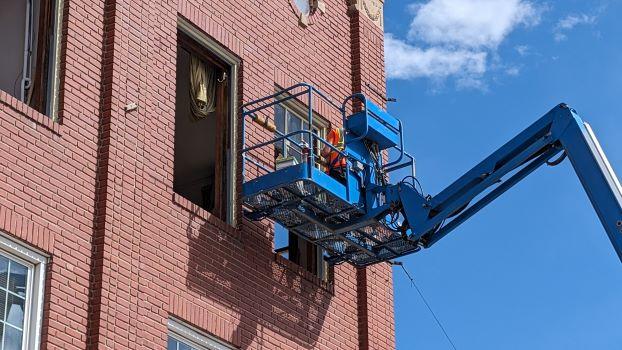
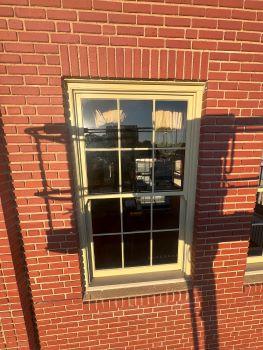
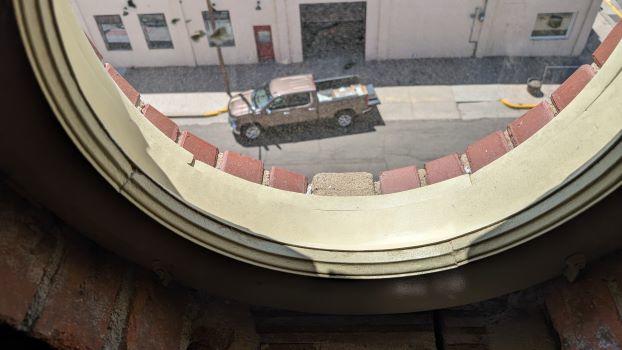
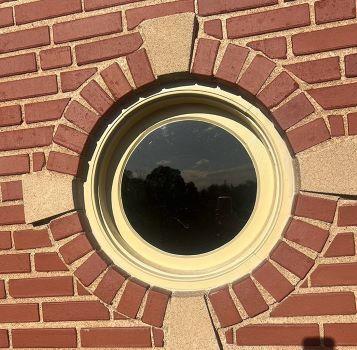
Before

After
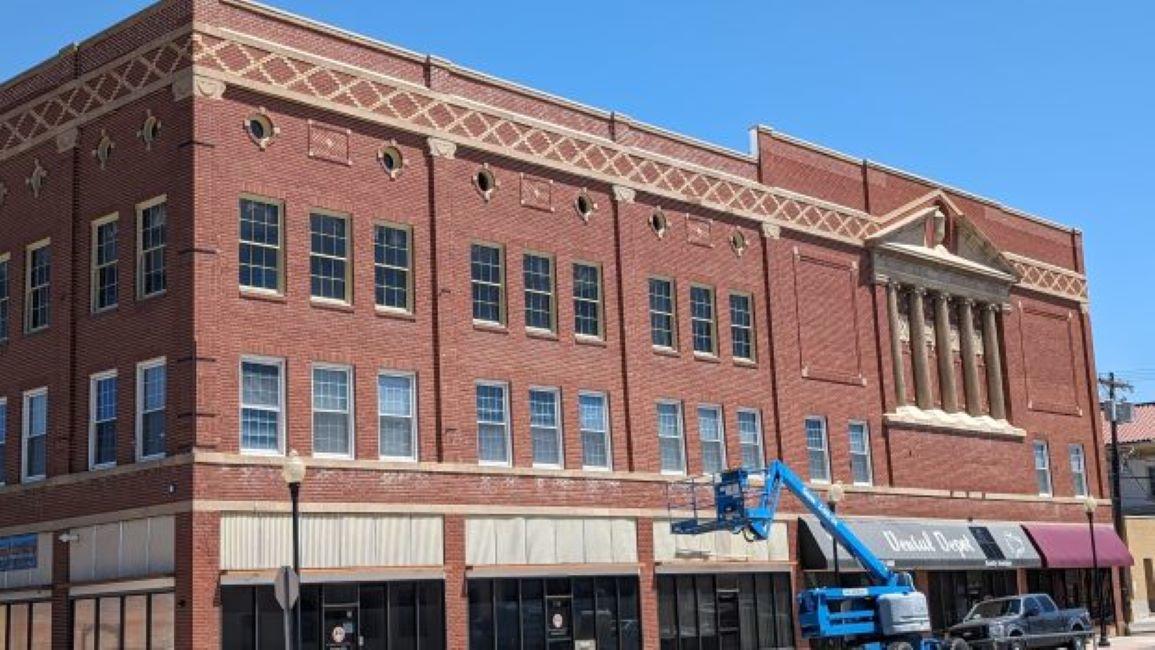
Phase I: Roof Rehabilitation
The Historic Masonic Lodge Building has a new roof and Phase II is kicking off. Funded in part by the History Colorado-State Historical Fund, this project addressed critical roof and parapet rehabilitation, drainage issues, and planning for future phases of rehabilitation, including interior work. Work was completed in late Spring 2023.


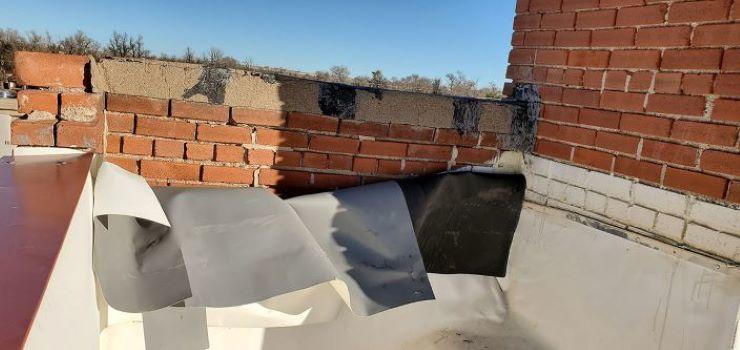
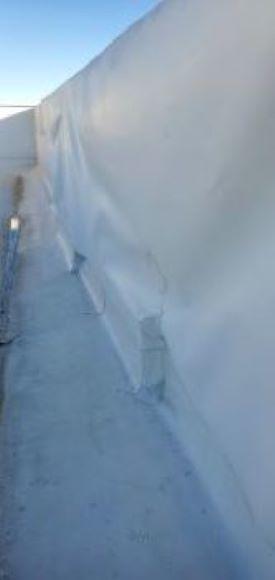
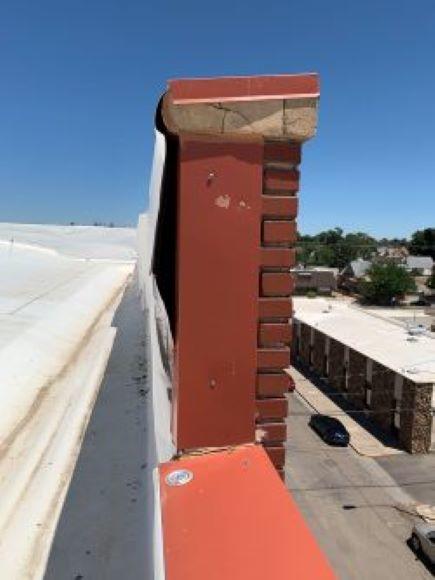
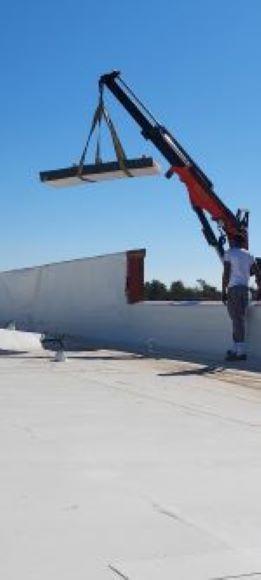
History of the La Junta Euclid Masonic Lodge
The Masonic Lodge is the largest and most significant building in La Junta’s downtown and housed the Euclid Lodge of the Fraternal Order of Masons for over 80 years. Constructed for $65,000 the building was dedicated on March 23, 1926. The building is an exceptional example of the Neo-Classical style, and the interior is largely unaltered.
It was sold by the Masons in 2005 to a private owner who continued to commercially rent the first-floor spaces. The District Attorney for the 16th Judicial District office moved into the second floor in 2010. The DA’s need for additional space combined with the owner’s need to sell provided Otero, Bent, and Crowley Counties the opportunity to purchase the building.
The Preservation Board researched and nominated the Masonic Lodge to the County Historic Register under Criteria A for its association with the social history of the Masonic Order; Criteria C for its outstanding architectural prominence representing the Neo-Classical Style; and Criteria D for its geographic importance to Otero County and the City of La Junta. This first step opened the door for grants and the use of Colorado’s Historic Preservation Tax Credit for the rehabilitation of the building.
In late 2019 the Commissioners for the counties of Otero, Bent, and Crowley received a History Colorado-State Historical Fund grant to have a Historic Structure Assessment (HSA) of the building conducted by preservation architects from Form+Works Design Group. This HSA identified needed rehabilitation work, priorities, and phasing options. The roof and drainage systems were identified as the priority for rehabilitation.
The Commissioners have partnered with Otero Partner’s Inc. which serves as the applicant for grants and preservation tax credits. OPI is a 501(c)3 established to encourage economic diversification, job creation, and business opportunities in Otero County and Las Animas Counties. Otero County’s six municipalities, Otero County, and Las Animas County make up OPI’s membership. OPI received State Historical Fund grants for roof rehabilitation and planning documents.
Colorado’s Historic Preservation Tax Credit is being utilized to leverage other funds for the rehabilitation of the building. The Part 1 Colorado Preservation Tax Credit application to the State of Colorado has been submitted and approved, and tax credits reserved. Once Phase I work is completed, the final paperwork will be submitted. OPI already has a contract for the sale of the tax credits, and the funds received will be used as a cash match for future phases of rehabilitation. This is a perfect example of how the counties are leveraging funds to provide improved services to residents and encourage economic development.
If you have historic photographs or information on the Masonic Lodge Building, or events held there, please email the OCHPAB at ochistoricpreservation@oterocounty.gov
Manzanola United Methodist Church and The Dry African American Homestead Community
Congratulations to the Manzanola United Methodist Church (MUMC) on receiving two grants to begin rehabilitation of this historic church which is listed on the Otero County Register of Historic Places and has received a preliminary determination of eligibility for the National Register.
A grant of $250,000 was received from History Colorado - The State Historical Fund.
The second grant of $100,000 was from the African American Cultural Heritage Action Fund's Black Churches grant program, which is a program of the National Trust for Historic Preservation, with support from Lilly Endowment Inc. The MUMC was one of 35 organizations in 22 states to receive a total of $4 million in grant funding to help historic Black churches and congregations utilize historic preservations to address the institution's needs and the cultural assets and stories they steward.
This first phase of the rehabilitation of the MUMC will include critical roof and exterior wood rehabilitation and the initial phase of restoration of the historic stained glass windows. The project will kick off the fourth week of August 2023, with work projected to begin in September.
Registrants of the "On the Road" historic preservation event being held by Colorado Preservation Inc. will have an opportunity to visit the Church and learn about The Dry and the Church rehabilitation during the tour "Historic Preservation - Off Main Street" which will be offered on August 26th.
In 1893, the First Methodist Episcopal Church of Catlin (later named Manzanola) was founded. The small congregation first worshipped out of a local elementary school building before moving to their first church building in 1896. In 1908, the MUMC was completed for $9,000. The building’s construction and its subsequent history became closely intertwined with the African American community who moved to southeast Colorado, specifically an agricultural area south of Manzanola called “The Dry.” Beginning in 1915, the first of approximately 50 families arrived at The Dry and attended the Church, vacation bible schools, and related events. After the AME Church 20 in La Junta closed, the Manzanola Methodist Church became the heart of The Dry community, and the congregation grew over time. There were 38 members in 1898 and 332 by 1933. Although the challenges of the 1930s (the Dust Bowl and Depression) led many residents of The Dry to seek jobs with a railway or in cities, other families remained in the area and retained their homestead property. Some families returned post-1960s and became majority members of the Church. These African American residents attended the Manzanola Methodist Church, which became their spiritual home, and increasingly the history of the Church and The Dry became intertwined. Alice McDonald, daughter of Rolan Craig, is a descendent of one of the first congregant families of The Dry. Today, Mrs. McDonald is the contact and heartbeat of the African American community in Manzanola, which continues its stewardship of MUMC.
Years of deterioration, however, have taken a toll on the building and the Church recently had to cease renting some of its spaces for community functions. Following recommendations in a 2021 historic structure assessment funded by the State Historical Fund, this project will address critical items such as temporary patching of the roof, and exterior rehabilitation of wood louvers at the southeast tower, wood shingles at projecting gables, wood beaded board, and wood brackets. This project will preserve a rare and underrepresented resource and jumpstart its path to re-activating spaces for the community’s greatest benefit.
If you have historic photographs of the MUMC you would be willing to share, please contact us at ochistoricpreservation@oterogov.org
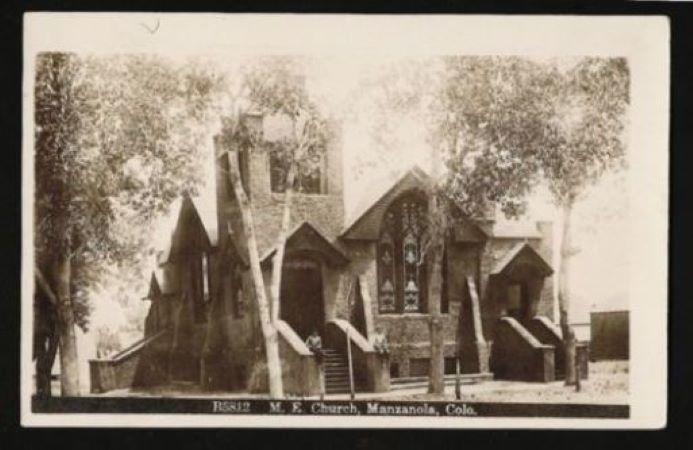
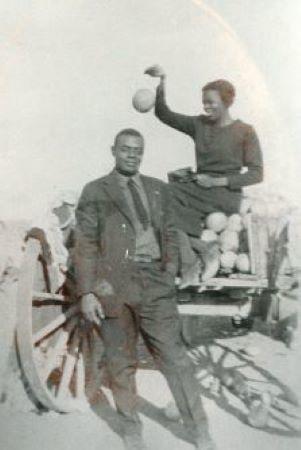
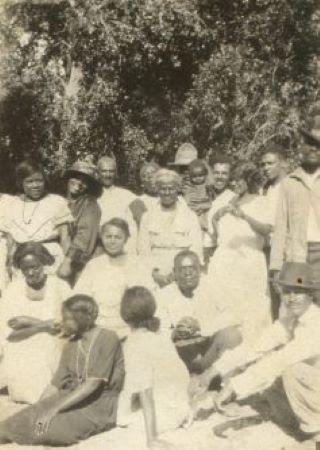
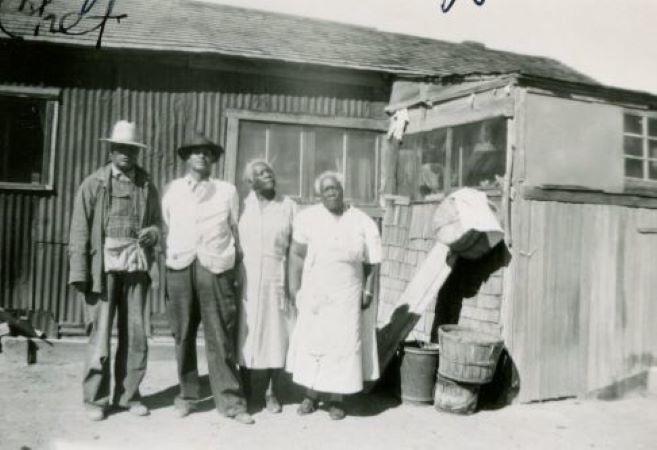
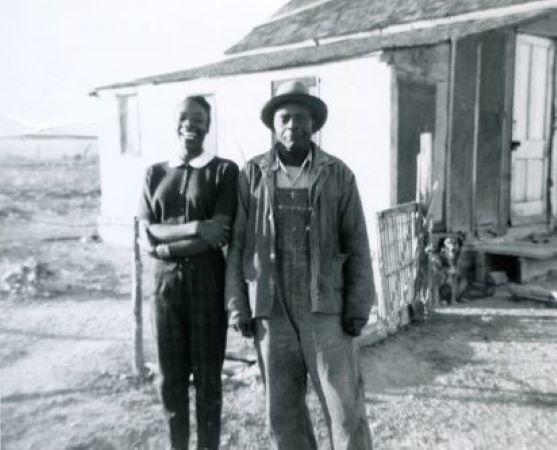

OCHPAB Educational Project - Otero County as Seen Through our Historic Places
In June 2023, the OCHPAB received a Certified Local Government grant from History Colorado to research and develop a consumable workbook for every 3rd-grade student in Otero County, with an accompanying teacher resource manual, both aligned with the Colorado educational standards and goals. We are looking forward to helping students understand that our rural America is rich in historical locations that played an important part in the development of the West. It is anticipated the workbook will be approximately 45-50 pages and will help him or her understand that what they grew up with has value while planting the seeds of the benefits of historic preservation. This project will provide children with the opportunity to work like young historians and develop a real understanding of the nature of the subjects as a process of inquiry.
Home on the Range: Podcasts
Take a driving tour and listen to local homesteaders, ranchers, and historians share about life in the Purgatoire River Region by listening to our podcasts below. The menu icon in the upper right corner of the screen lists nine episodes sure to delight and inform as they transport the listener to days gone by.
Home on the Range: Brochures
Peruse these historically rich brochures for a fuller education on the Purgatoire River Valley and Comanche National Grassland.
Purgatoire River Region - Historic Context
- Purgatoire River Region - Historic Context
- Project Director: Abbey Christman
- Report Authors: Richard Carillo, Abbey Christman, Kathleen Corbett, Lindsay Joyner, and Jonathon Rusch
- Report Layout: Michelle Chichester
- Research Assistance: Michelle Chichester, Emily Noggle, and Lauren Trice
Colorado Preservationist - The Colorado Preservation Journal
Colorado Preservationist - The Colorado Preservation Journal - Fall 2010
